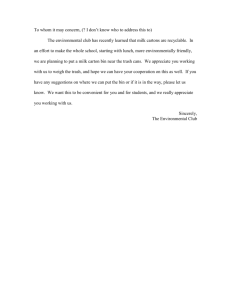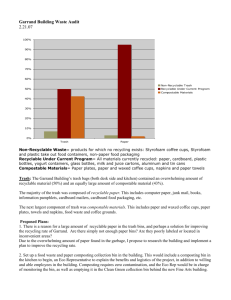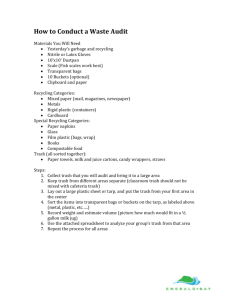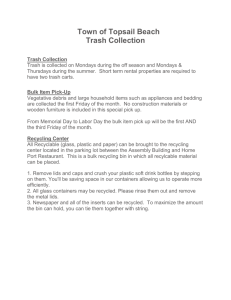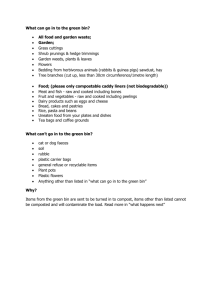Loyola Building Waste Audit
advertisement
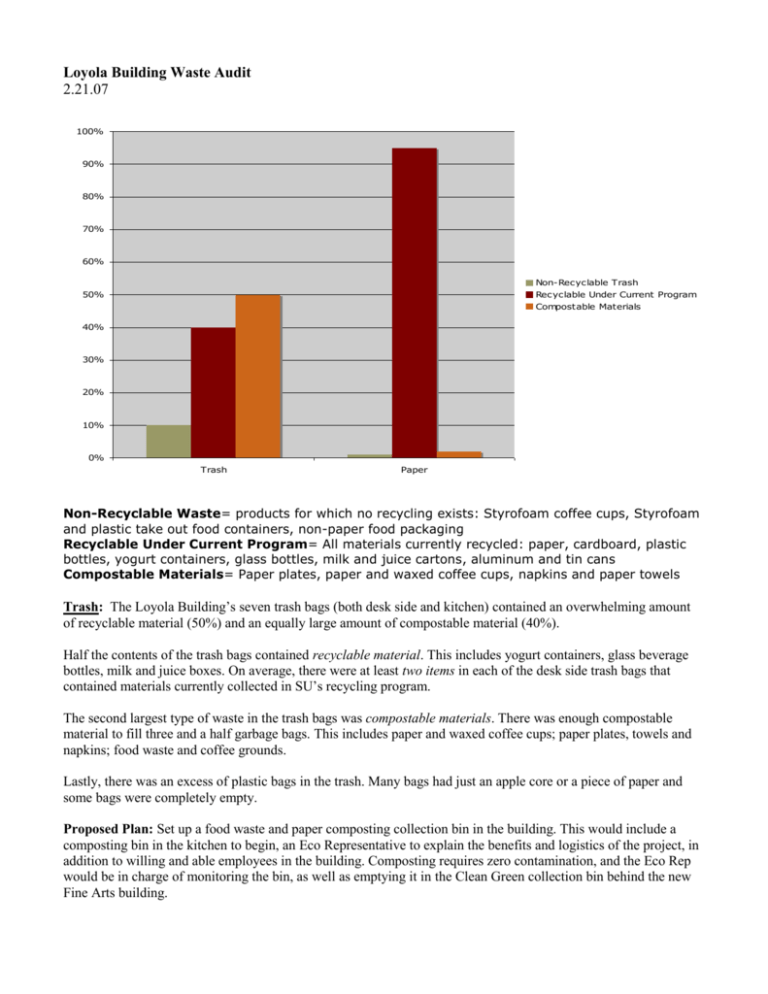
Loyola Building Waste Audit 2.21.07 100% 90% 80% 70% 60% Non-Recyclable Trash Recyclable Under Current Program Compostable Materials 50% 40% 30% 20% 10% 0% Trash Paper Non-Recyclable Waste= products for which no recycling exists: Styrofoam coffee cups, Styrofoam and plastic take out food containers, non-paper food packaging Recyclable Under Current Program= All materials currently recycled: paper, cardboard, plastic bottles, yogurt containers, glass bottles, milk and juice cartons, aluminum and tin cans Compostable Materials= Paper plates, paper and waxed coffee cups, napkins and paper towels Trash: The Loyola Building’s seven trash bags (both desk side and kitchen) contained an overwhelming amount of recyclable material (50%) and an equally large amount of compostable material (40%). Half the contents of the trash bags contained recyclable material. This includes yogurt containers, glass beverage bottles, milk and juice boxes. On average, there were at least two items in each of the desk side trash bags that contained materials currently collected in SU’s recycling program. The second largest type of waste in the trash bags was compostable materials. There was enough compostable material to fill three and a half garbage bags. This includes paper and waxed coffee cups; paper plates, towels and napkins; food waste and coffee grounds. Lastly, there was an excess of plastic bags in the trash. Many bags had just an apple core or a piece of paper and some bags were completely empty. Proposed Plan: Set up a food waste and paper composting collection bin in the building. This would include a composting bin in the kitchen to begin, an Eco Representative to explain the benefits and logistics of the project, in addition to willing and able employees in the building. Composting requires zero contamination, and the Eco Rep would be in charge of monitoring the bin, as well as emptying it in the Clean Green collection bin behind the new Fine Arts building. In reference to the plastic bags, WFF could work to empty the trash into one large bag instead of removing every bag, every night. This would eliminate a lot of unnecessary waste. Paper Recycling: As the graph shows, most of the paper recycling bin was composed of paper. However, there were a few issues: 1. Shredded paper goes in a separate bag, because of the difference in paper quality. There was a separate bag for shredded paper, but it was not tied off and most of the shredded paper was mixed with the regular paper. Was this a fault of WFF or the person who put the bag in the recycling bin? 2. Most of the computer paper found in the recycling bin was printed on one-side. This can be changed very simply, by changing the printing function to print on both sides.
